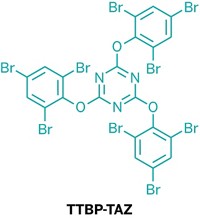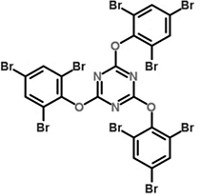Advertisement
Grab your lab coat. Let's get started
Welcome!
Welcome!
Create an account below to get 6 C&EN articles per month, receive newsletters and more - all free.
It seems this is your first time logging in online. Please enter the following information to continue.
As an ACS member you automatically get access to this site. All we need is few more details to create your reading experience.
Not you? Sign in with a different account.
Not you? Sign in with a different account.
ERROR 1
ERROR 1
ERROR 2
ERROR 2
ERROR 2
ERROR 2
ERROR 2
Password and Confirm password must match.
If you have an ACS member number, please enter it here so we can link this account to your membership. (optional)
ERROR 2
ACS values your privacy. By submitting your information, you are gaining access to C&EN and subscribing to our weekly newsletter. We use the information you provide to make your reading experience better, and we will never sell your data to third party members.
Environment
Fire Retardants In Baby Products May Pose Health Risks
Toxic Substances: Infants may be exposed to high levels of a toxic fire retardant
by Kellyn Betts
May 18, 2011
| A version of this story appeared in
Volume 89, Issue 21

The first investigation of halogenated fire retardants in baby products has suggested that infants are exposed to multiple retardants, including one that may be at levels higher than deemed acceptable by a federal consumer protection agency (Environ. Sci. Technol., DOI: 10.1021/es2007462).
Little information has been available about the identity or concentration of fire retardants that manufacturers add to baby products to prevent or slow burning. Inspired by her first pregnancy, in 2009, Heather M. Stapleton of Duke University's Nicholas School of the Environment led a team that tested baby products for the presence of the retardants. They chose to examine products that contain polyurethane foam because they knew that manufacturers often add relatively high concentrations of flame retardants to foams. These chemicals can also escape readily from foams.
Stapleton and her team collected baby products samples from volunteers in 13 states. The researchers found fire retardants in the foam of 80 of the 101 products they tested, including car seats, changing table pads, sleep positioners, mattresses, and nursing pillows. Gas chromatography and mass spectrometry data suggested that some of the flame retardants may have decomposed during the analysis, so the researchers confirmed their findings with high-performance liquid chromatography coupled with high resolution mass spectrometry.
They found tris(1,3-dichloroisopropyl) phosphate (TDCPP) the most often, in 36% of the products. TDCPP is a retardant that children's pajama makers discontinued using in the 1970's due to concerns about mutagenicity (Science, DOI: 10.1126/science.347576). Recent tests suggest that TDCPP may also have neurotoxic properties (Toxicol. Appl. Pharmacol., DOI: 10.1016/j.taap.2011.01.005). The researchers found the retardant at levels of up to 12% by weight of foam.
Stapleton's team estimated that infants' exposure to TDCPP may exceed the Consumer Product Safety Commission's acceptable daily intake levels. In a written statement, the consumer agency commented that TDCPP "may pose a significant health risk to consumers."
The researchers also detected milligram per gram of foam levels of eight other flame retardant chemicals, including the compounds associated with the fire retardant mixtures known as Firemaster 550 and pentaBDE, the latter of which the Stockholm Convention on Persistent Organic Pollutants banned in 2009. Recent research has linked children's exposure to some pentaBDE compounds to neurodevelopmental impairments (Environ. Health Perspect., DOI: 10.1289/ehp.0901340 and DOI: 10.1289/ehp.0901015) and other health effects (Epidemiology, DOI: 10.1097/01.ede.0000362982.21438.3d).
Stapleton and her colleagues also identified two organophosphate flame retardants, one of which, tris (2-chloroethyl) phosphate (TCEP), is a compound some research suggests could be carcinogenic.
Adrian Covaci of the University of Antwerp's Toxicological Center suggests that babies may be exposed mainly via inhalation to the chemicals reported in the paper. As a result, babies would have proportionately greater exposure to the more volatile compounds, including TDCPP and TCEP, than to heavier brominated compounds.
In a written statement, the American Chemistry Council comments, "This study attempts to examine the existence of certain flame retardants in a small sampling of children's products; it does not address exposure or risk."
But Stapleton's results concern Linda Birnbaum, director of the National Institute of Environmental Health Sciences, because infants are particularly vulnerable to chemical exposure and because babies spend much of their time next to foam products. Of the retardants in the tested products, only pentaBDE is known to impact people. But some of the others cause health problems in animals, she says.
To co-author Tom F. Webster of Boston University's School of Public Health, the paper's findings highlight the U.S. government's reliance on academic scientists to discover toxic chemicals in consumer products and to work out the resulting health risks. The process is not swift, he says. As a result, consumers of all ages can be exposed to substances that may harm their health, he laments.





Join the conversation
Contact the reporter
Submit a Letter to the Editor for publication
Engage with us on Twitter